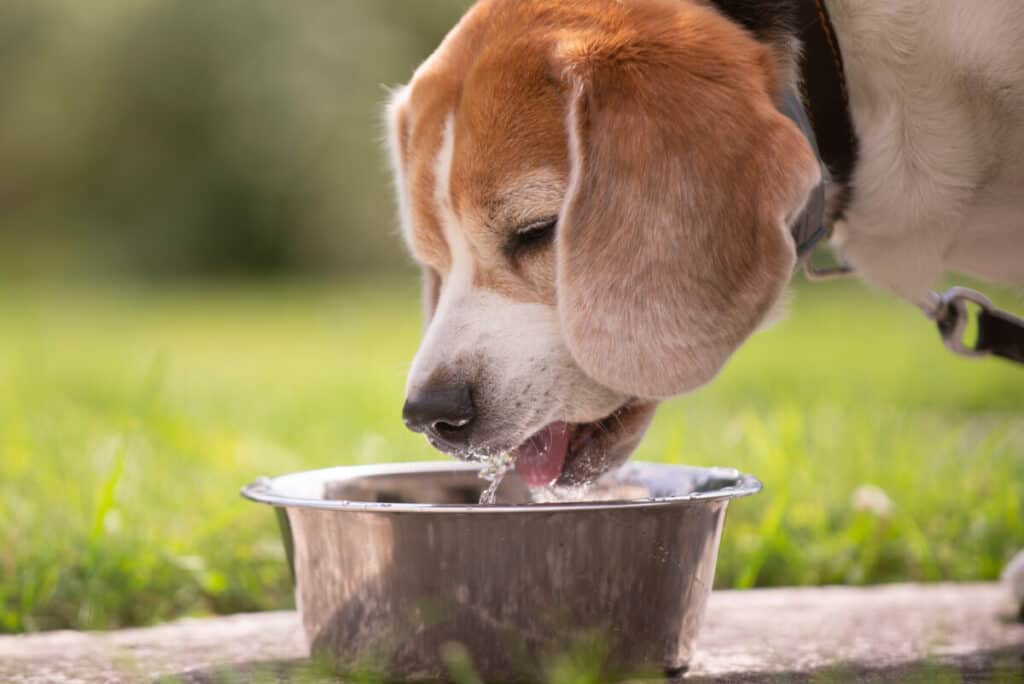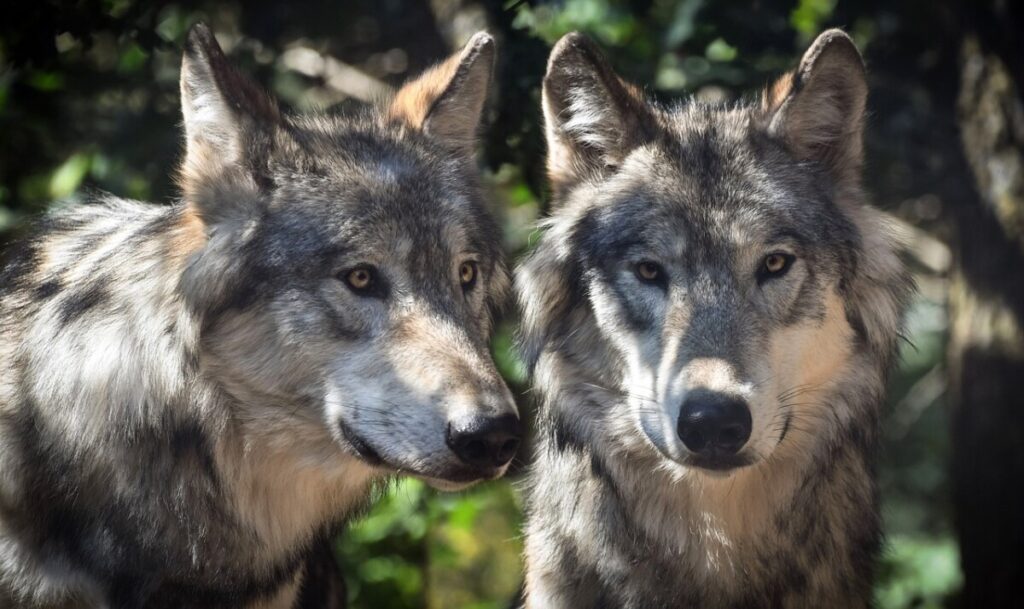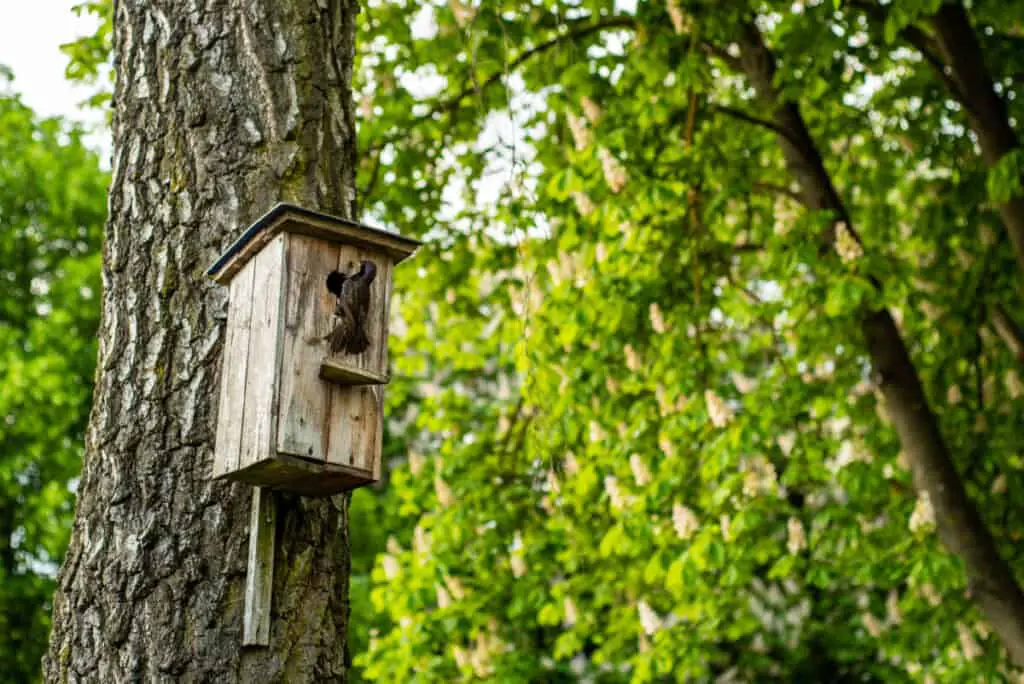Animals, like humans, have certain needs that are essential for their survival. These needs include water, shelter, companionship, oxygen, sleep, exercise, and reproduction. Each of these requirements plays a crucial role in maintaining an animal’s health and well-being. Understanding what animals need to stay alive is not only important for their individual welfare but also for the overall balance and sustainability of ecosystems.
Water is one of the most fundamental necessities for animals’ survival. It is vital for hydration and enables various physiological functions within their bodies. Without access to clean water sources, animals would quickly become dehydrated and face severe health consequences.
Shelter is another critical requirement as it provides protection from harsh weather conditions and predators. Animals seek refuge in caves, burrows, trees or construct nests to shield themselves from external threats.
Companionship plays a significant role in an animal’s life as it provides social interaction and emotional well-being. Many species form social bonds with members of their own kind or even other species. This interaction promotes mental stimulation and helps prevent loneliness or stress-related ailments.
Oxygen is necessary for respiration – a process through which animals obtain energy from food sources. Adequate oxygen levels ensure proper functioning of organs and tissues within an animal’s body.
Sleep allows animals to rest and rejuvenate after periods of activity. It facilitates various physiological processes such as muscle repair, memory consolidation, immune system maintenance, among others. Lack of sleep can have detrimental effects on an animal’s physical health and cognitive abilities.
Exercise is crucial for maintaining optimal health in animals by promoting cardiovascular fitness, muscle tone development, weight management, and mental stimulation.
Lastly, reproduction ensures the continuation of species over generations by producing offspring that inherit genetic traits necessary for adaptation to changing environments.
Understanding the fundamental needs of animals helps us appreciate their intricate dependencies within ecosystems while emphasizing the importance of preserving habitats that fulfill these requirements. By providing suitable conditions that meet these needs in captivity or conserving natural habitats, we can contribute to the well-being and conservation of animal species worldwide.

Water: Essential for Hydration and Vital Functions
Water is a fundamental requirement for the sustenance of animals, as it plays an indispensable role in maintaining hydration levels and facilitating vital physiological functions.
Water conservation is a key aspect for animals to survive in their respective habitats. Many animals have developed various mechanisms to adapt and conserve water in extreme environments. For example, desert-dwelling animals such as camels have evolved specific physiological adaptations that allow them to go without water for extended periods of time. They possess the ability to store large amounts of water in their bodies, which helps them survive in arid conditions.
Hydration in extreme environments is crucial for animal survival. In hot climates or during physical exertion, animals lose significant amounts of water through evaporation from their skin or respiratory system. To counteract this loss, they must actively seek out sources of water or develop strategies to minimize water loss.
Some animals have evolved specialized kidneys that can concentrate urine and extract as much water as possible from waste products before excreting them. Others have developed behavioral patterns such as nocturnality or burrowing, allowing them to avoid exposure to high temperatures and reduce the amount of water lost through sweat.
Water is not only essential for hydration but also plays a vital role in facilitating various physiological functions necessary for animal survival. Animals have developed remarkable adaptations and strategies to conserve water in extreme environments, ensuring their long-term viability even when faced with limited access to this precious resource.
Understanding these mechanisms can provide valuable insights into how different species cope with environmental challenges and may contribute to efforts aimed at conserving biodiversity and protecting vulnerable ecosystems.
Food: Sustenance and Nutrients
Animals, much like humans, require food to sustain their lives and maintain optimal health. Food is essential for several reasons, and its consumption plays a vital role in an animal’s survival. Here are four paragraphs explaining why animals need food and how it helps them:
Energy Source: Food serves as the primary source of energy for animals. Through a process called cellular respiration, the nutrients in food are broken down to release energy that fuels various bodily functions. This energy is necessary for basic metabolic processes, such as breathing, digestion, and circulation. Without an adequate supply of food, animals would lack the energy required for physical activities, growth, and reproduction.
Nutrient Intake: Animals need food to obtain essential nutrients that their bodies cannot produce independently. Nutrients like proteins, carbohydrates, fats, vitamins, and minerals are crucial for maintaining healthy bodily functions. Proteins are required for growth, repair of tissues, and the production of enzymes and hormones. Carbohydrates and fats provide energy, while vitamins and minerals support various physiological processes, including immune function and bone health. A well-balanced diet ensures that animals receive the necessary nutrients for optimal growth and overall well-being.
Maintenance of Body Functions: Food plays a vital role in the maintenance of an animal’s body functions. Different organs and systems rely on specific nutrients to function correctly. For example, the digestive system requires dietary fiber to promote healthy digestion, while the skeletal system needs calcium and phosphorus for strong bones and teeth. Similarly, the circulatory system requires iron to produce oxygen-carrying red blood cells. Adequate nutrition through food ensures that these systems work efficiently, promoting the animal’s overall health and longevity.
Adaptation to Environment: Animals’ food requirements can vary depending on their species, habitat, and lifestyle. Many animals have evolved specific dietary needs to adapt to their surroundings. Herbivores consume plant-based diets, while carnivores rely on meat. Omnivores have the ability to eat both plants and animals. Food consumption allows animals to obtain the necessary nutrients suited to their physiology and ecological niche. This adaptation to their environment through food choices enables animals to survive and thrive in their respective habitats.
Shelter: Protection from the Elements and Predators
Shelter is essential for animals to ensure their safety from harsh weather conditions and potential threats from predators. Animals employ various strategies to secure shelter, such as building nests, burrows, and dens, or finding safe hiding places in natural features like caves or dense vegetation.
For example, birds construct intricate nests using twigs, leaves, and other materials to provide protection for their eggs and young offspring. Similarly, mammals like rabbits dig burrows underground that serve as a safe retreat from predators and extreme temperatures. These shelters not only shield animals from adverse weather elements but also provide a sense of security where they can rest without fear.
In addition to providing protection against the environment and predators, shelter plays a crucial role in facilitating food acquisition for animals. Many species rely on specific habitats for foraging, hunting, or grazing activities necessary for sustenance.
For instance, certain bird species require trees with suitable branches to build their nests near abundant sources of insects or fruits that serve as their primary food source. Similarly, predators often establish territories encompassing areas with ample prey populations and sufficient cover for ambush tactics during hunting expeditions. By securing appropriate shelters within these habitats, animals can optimize their chances of accessing adequate food resources required to meet their nutritional needs.
Overall, shelter serves as an indispensable component of an animal’s survival strategy by providing protection against external threats while also enabling access to vital resources such as food. Through the construction of nests or burrows and seeking out safe hiding places in nature’s nooks and crannies, animals are able to ensure their well-being amidst fluctuating environmental conditions and potential danger posed by predators.
The ability to find suitable shelter reflects the remarkable adaptability exhibited by different species in order to thrive in diverse ecosystems across the globe.

Companionship: Social Interaction and Emotional Well-being
Companionship among animals fosters emotional well-being and promotes social interaction, thereby enhancing their overall quality of life. Socialization benefits animals by allowing them to develop important communication skills and learn appropriate behaviors within their social group.
Through companionship, animals can engage in play, grooming, and other forms of social interactions that contribute to their mental stimulation and happiness.
Emotional support is another crucial aspect of companionship for animals. Just like humans, animals can experience emotions such as loneliness or anxiety when they are isolated from others of their species. Having a companion provides them with a source of comfort and security, reducing stress levels and promoting a sense of belonging. This emotional support is particularly important during times of distress or change, as it helps animals cope with challenging situations more effectively.
Companionship reduces the risk of developing behavior problems. Animals that have companions tend to be less fearful or anxious.
Social interaction enhances cognitive abilities in animals.
Companionship can positively influence an animal’s physical health.
Animals with companions are often more resilient in the face of adversity.
Companionship plays a vital role in the lives of animals by providing socialization benefits and emotional support. It allows them to engage in meaningful interactions within their species, which contributes to their overall well-being. By understanding the importance of companionship for animals, we can better address their needs and create environments that promote healthy social relationships among them.
Oxygen: Respiratory Needs for Survival
Oxygen, a vital element for sustaining life, is essential for animals to meet their respiratory needs and ensure their survival.
The process of respiration involves the exchange of gases, with oxygen being taken in and carbon dioxide being expelled. Animals require oxygen to produce energy through cellular respiration, which is necessary for various physiological processes.
The respiratory system plays a crucial role in facilitating this exchange of gases. In most animals, this system consists of organs such as lungs or gills that enable the intake of oxygen from the environment and the release of carbon dioxide waste. The efficiency of an animal’s respiratory system directly impacts its overall respiratory health and ability to survive.
For instance, animals with more advanced respiratory systems like mammals have highly specialized structures that maximize gas exchange efficiency. These structures include alveoli in the lungs, which provide a large surface area for efficient diffusion of oxygen into the bloodstream.
Maintaining optimal respiratory health is essential for animals as it enables them to engage in physical activities necessary for survival, such as hunting or escaping predators. Additionally, proper oxygenation supports various physiological functions like metabolism and tissue repair.
Any impairment or damage to an animal’s respiratory system can have severe consequences on its overall well-being and survival chances. Therefore, ensuring adequate access to clean air with sufficient oxygen levels is crucial when considering the needs and care required by animals to stay alive.
Sleep: Rest and Rejuvenation for Proper Functioning
During sleep, animals experience a state of rest and rejuvenation that is vital for ensuring proper functioning and optimal health.
Restorative sleep allows animals to recover from the physical and mental exertion they undergo during their waking hours.
It is during sleep that the body repairs damaged tissues, replenishes energy stores, and strengthens the immune system.
Sleep also plays a crucial role in memory consolidation and learning processes, as it provides an opportunity for the brain to process information gathered throughout the day.
Sleep patterns vary across different animal species.
Some animals exhibit monophasic sleep patterns, where they have one continuous period of sleep per day.
For example, humans typically sleep for a single block of time at night.
Other animals display polyphasic sleep patterns, which involve multiple shorter periods of sleep throughout the day or night.
For instance, cats are known to take several short naps throughout the day.
The duration and quality of sleep can also differ among species.
While some animals require only a few hours of sleep each day, others need significantly more to function optimally.
Restorative sleep is essential for animals’ overall well-being as it enables them to recover from daily activities and maintain optimal health.
Sleep patterns can vary across different species with some exhibiting monophasic while others display polyphasic sleeping habits.
Understanding these variations in sleep behavior contributes to our knowledge of how animals adapt to their environments and ensures their survival in diverse ecological niches.

Exercise: Physical Activity for Health and Vitality
Exercise, a form of physical activity that promotes health and vitality, is crucial for animals to maintain optimal well-being. Just like humans, animals need regular exercise to stay physically fit and maintain cardiovascular health. Physical fitness is important for animals as it helps to build strong muscles and bones, improve flexibility and balance, and enhance overall strength. Regular exercise also plays a vital role in preventing obesity in animals by burning excess calories and maintaining a healthy weight.
Incorporating exercise into an animal’s routine can have numerous benefits for their cardiovascular health. Engaging in physical activity increases heart rate and improves blood circulation, which helps deliver oxygen and nutrients more efficiently to the body’s organs and tissues. This increased blood flow can also strengthen the heart muscle itself, leading to improved cardiac function over time. Additionally, exercise stimulates the production of endorphins – natural chemicals in the brain that promote feelings of happiness and well-being. These positive effects on mental health further contribute to an animal’s overall vitality.
To visually represent the importance of exercise for animals’ physical fitness and cardiovascular health, the following table provides a concise overview:
| Benefits of Exercise | Importance |
|---|---|
| Builds strong muscles and bones | Enhances overall strength |
| Improves flexibility and balance | Prevents obesity by burning excess calories |
| Increases heart rate | Improves blood circulation |
| Delivers oxygen & nutrients effectively | Strengthens the heart muscle |
| Stimulates endorphin production | Promotes feelings of happiness |
By incorporating regular exercise into their routine, animals can reap these benefits while maintaining optimal well-being. It is essential for animal owners or caretakers to provide opportunities for physical activity suitable for their specific species or breed.
Reproduction: Ensuring the Continuation of Species
Reproduction is a critical process that ensures the continuation of species, highlighting the importance of genetic diversity and the perpetuation of desirable traits. Different animal species have evolved unique mating habits and reproductive strategies to maximize their chances of successful reproduction. These strategies can vary greatly depending on factors such as environmental conditions, social structures, and available resources.
Mating Habits:
- Animals have developed various mating habits to attract potential mates.
- For example, some species engage in elaborate courtship rituals that involve displays of strength or colorful plumages to demonstrate their fitness and genetic quality.
- Others rely on scent marking or vocalizations to communicate their availability for mating.
- These behaviors not only serve as signals for potential partners but also help individuals assess each other’s suitability for reproduction.
Reproductive Strategies:
- Animals employ different reproductive strategies to ensure the survival of their offspring.
- Some species are characterized by high levels of parental care, where one or both parents invest significant time and energy into raising their young.
- This can include building nests, providing food, or protecting offspring from predators.
- In contrast, other species adopt a strategy of producing large numbers of offspring with little parental investment, relying on sheer numbers to increase the chances of survival.
Adaptations:
- Many animals have evolved specific adaptations related to reproduction that enhance their chances of success.
- These adaptations may include physical characteristics like specialized genitalia or reproductive organs designed for efficient fertilization or copulation.
- Additionally, some animals exhibit behavioral adaptations such as synchronized breeding seasons or migration patterns to optimize mating opportunities and minimize competition.
Understanding the diverse range of mating habits and reproductive strategies employed by animals provides valuable insights into evolutionary processes and ecological dynamics within ecosystems. It highlights how different species have adapted over time in response to selective pressures and environmental constraints to ensure successful reproduction and ultimately the continuation of their respective populations.
This understanding is crucial for predicting how ecosystems will respond to changes in their environment, such as climate change or the introduction of invasive species. By studying the interactions between species and their environment, scientists can gain insights into the complex web of relationships that exist within ecosystems and better understand how these relationships shape the structure and function of ecological communities.
Additionally, studying evolutionary processes and ecological dynamics can provide valuable information for conservation efforts, as it allows scientists to identify vulnerable species and understand the factors that contribute to their decline or extinction. Overall, gaining insights into evolutionary processes and ecological dynamics is essential for effectively managing and conserving the biodiversity and stability of ecosystems.
